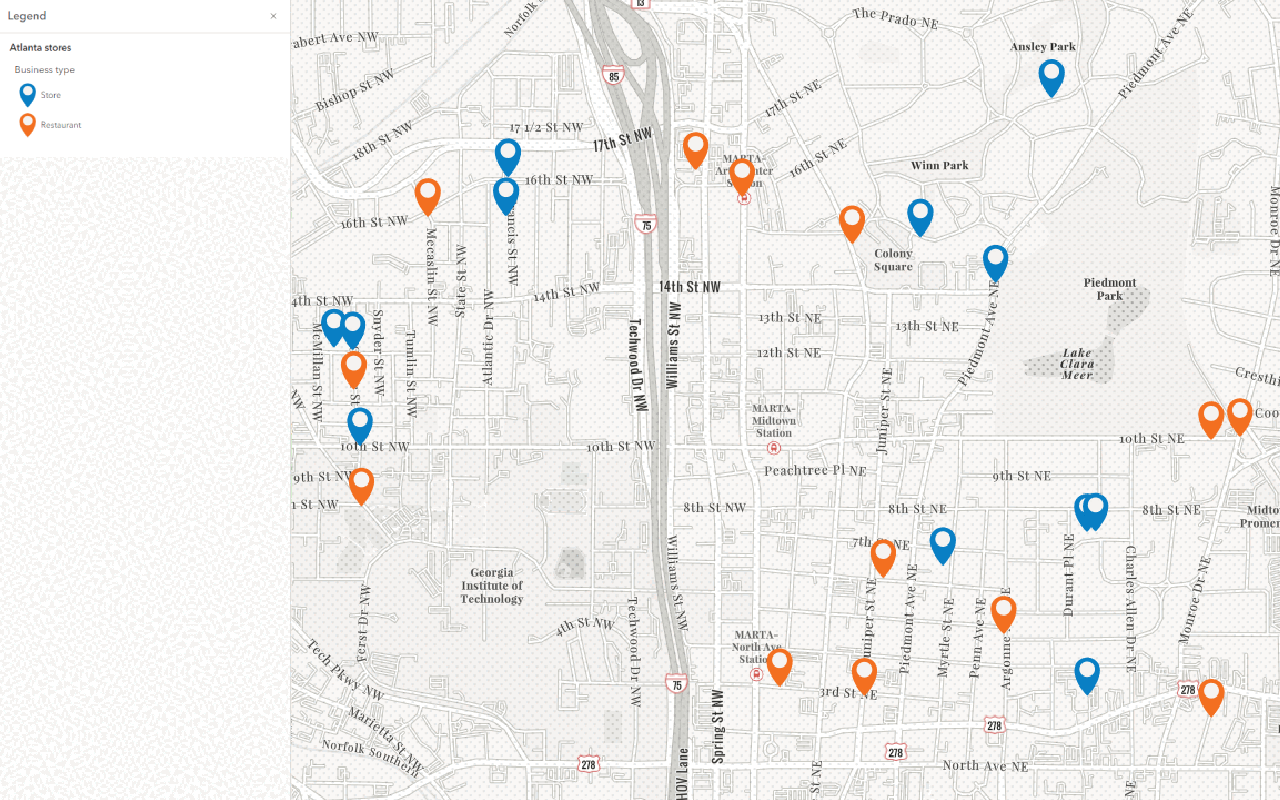
What is feature analysis?
Feature analysis is the process of using the feature analysis service to perform server-side geometric and analytic operations on feature data. To access the service, you can use ArcGIS tools or APIs to execute different types of analyses. For example, you can find features, merge or overlay features, calculate feature statistics, or find patterns and relationships in feature data. The operation you use depends on the type of problem you are trying to solve.
Feature analysis can help solve many different types of problems. For example, you can use it to:
- Understand where features are or where multiple features exist.
- Measure sizes, shapes, and distributions of features.
- Analyze relationships and interactions between features.
- Detect and quantify patterns and relationships between features.
- Make predictions based on existing or theoretical patterns and relationships.
To learn more about spatial analysis concepts and use cases, go to the following resources:
To perform feature analysis, you typically provide your feature data as input, execute a service operation, and then visualize and evaluate the results in a map. The feature data can be any collection of features that have a common type of geometry and set of attributes. Learn more about data input requirements in How to perform feature analysis.
Types of feature analysis
Feature analysis operations for the feature analysis service are grouped by the type of problems they solve and the type of feature data returned.
To learn more, click on the categories below:
| Category | Description | Operations | Result | Example |
|---|---|---|---|---|
| Find data | Selects a subset of features using a SQL or spatial query. | Find, Derive, Extract | A new feature collection or hosted feature layer. |

Finds existing polygons that match a SQL query. |
| Combine data | Combines or joins features from two or more feature datasets. | Merge, Overlay, Join, Dissolve | A new feature collection or hosted feature layer. |

Dissolves polygons from two input feature datasets. |
| Summarize data | Aggregates or summarizes feature data and creates statistics. | Aggregate points, Summarize nearby, Summarize within, Summarize center and dispersion | A new feature collection or hosted feature layer. |

Aggregate points into polygons. |
| Analyze patterns | Identifies spatial patterns and relationships in feature data. | Find hot spots, Find outliers, Find point clusters, Find similar locations, Calculate density, Interpolate points | A new feature collection or hosted feature layer. |

Find hot spots based on attribute values |
| Calculate geometries | Performs geometric calculations on existing features or can create new feature data. | Create buffers, Create centroids, Generate tessellations, | A new feature collection or hosted feature layer. |

Generate and merge buffers around features. |
Why use feature analysis?
You use feature analysis when you want to perform a server-side process on feature data. Feature data contains a collection of features, and each feature contains a geometry and set of attributes. This is different from geometry analysis which only involves processing geometries on the client-side. To see a comparison, go to Geometry vs feature analysis.
Below are reasons to use feature analysis and the feature analysis service:
Large datasets
The feature analysis service is designed to process large amounts of feature data. You can use the service to process thousands of features stored in a hosted feature layer or formatted as a feature collection (JSON). All of the processing occurs in the ArcGIS cloud infrastructure and is optimized for your organization.
Learn more about supported data formats in Prepare feature data.
Hosted data
To perform an analysis, you can use a hosted feature layer as input for the service operation. Using a hosted feature layer is the preferred way to perform an analysis on large datasets because the feature analysis service can easily access the data and execute calculations in the ArcGIS cloud. The results of an operation can also be stored in ArcGIS as a hosted feature layer. This makes it easy to manage and access the results after an operation is complete.
Learn more about how to use hosted feature layers in Data hosting.
Long transactions
To help with processing large amounts of feature data, the feature analysis service supports job requests. These are long transactions that make it easier to manage long transactions that are computationally intensive and have long durations.
Learn more about managing job requests in Perform the analysis - ArcGIS REST API.
Manage results
When an analysis is complete, the feature analysis service can return the results as a hosted feature layer which is automatically stored in ArcGIS. Each feature layer has an item page that you can use to interactively manage the access permissions of the data. The item permissions can be set to private, a group, your organization, or to everyone (public). Storing the results as a hosted feature layer also makes it easy to access with ArcGIS tools and APIs for further visual analyses and evaluation.
Learn more about accessing and managing hosted feature layers in Data hosting.
APIs
To access the analysis service there are a number of ArcGIS APIs you can use. This includes the ArcGIS API for Python, ArcGIS REST JS, and ArcGIS Maps SDK for JavaScript. Client APIs make it easy to implement authentication, access the service, and manage the job requests for each transaction. You can also access the service directly with the ArcGIS REST API.
To learn how to access the feature analysis service with APIs, go to How to perform a feature analysis.
Software and tools
You can also perform feature analyses interactively with ArcGIS tools such as Map Viewer and ArcGIS Pro. These tools provide an interface to access the feature analysis service and execute different operations. As a developer, using these tools is a helpful way to learn about the different types of operations you can perform, the different parameters that can be used, and how changing the parameters affects the analysis results.
Limitations
Tutorials
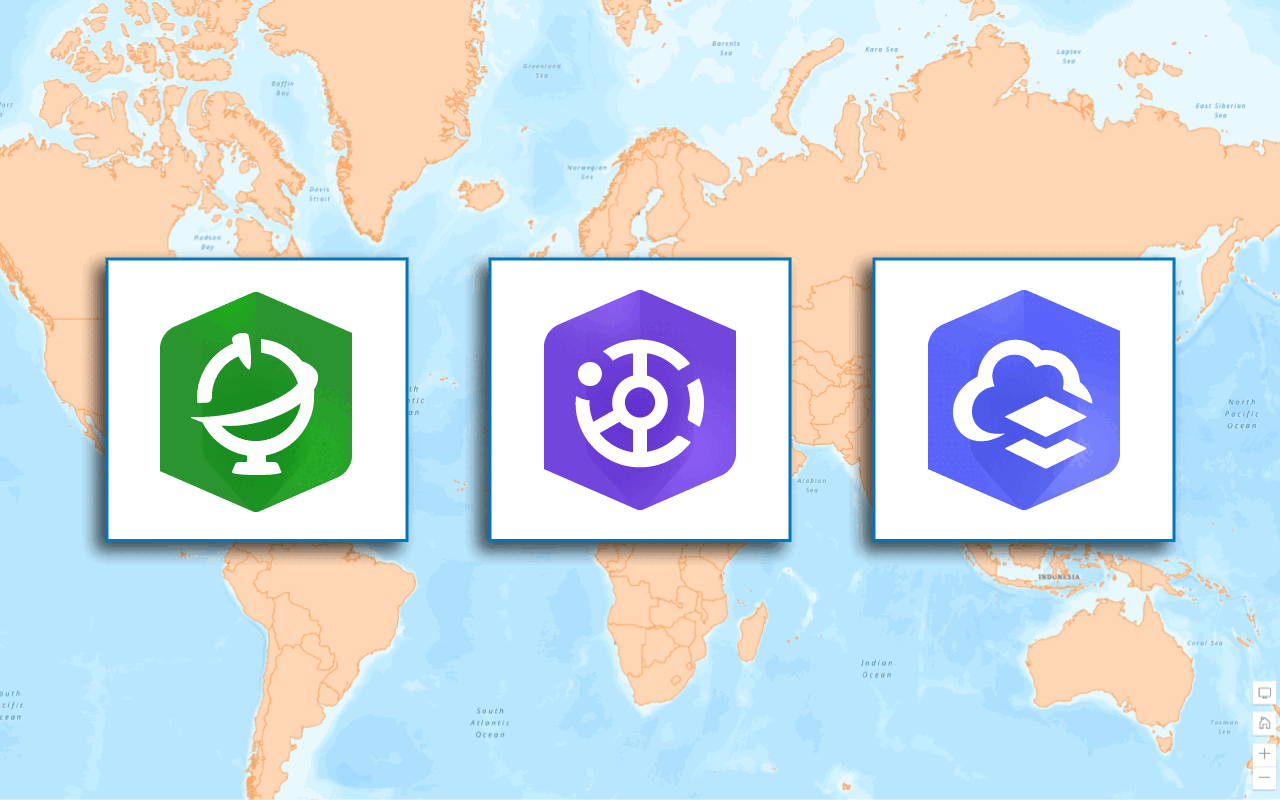
Find data sources
Discover data in ArcGIS that you can use for feature analysis.
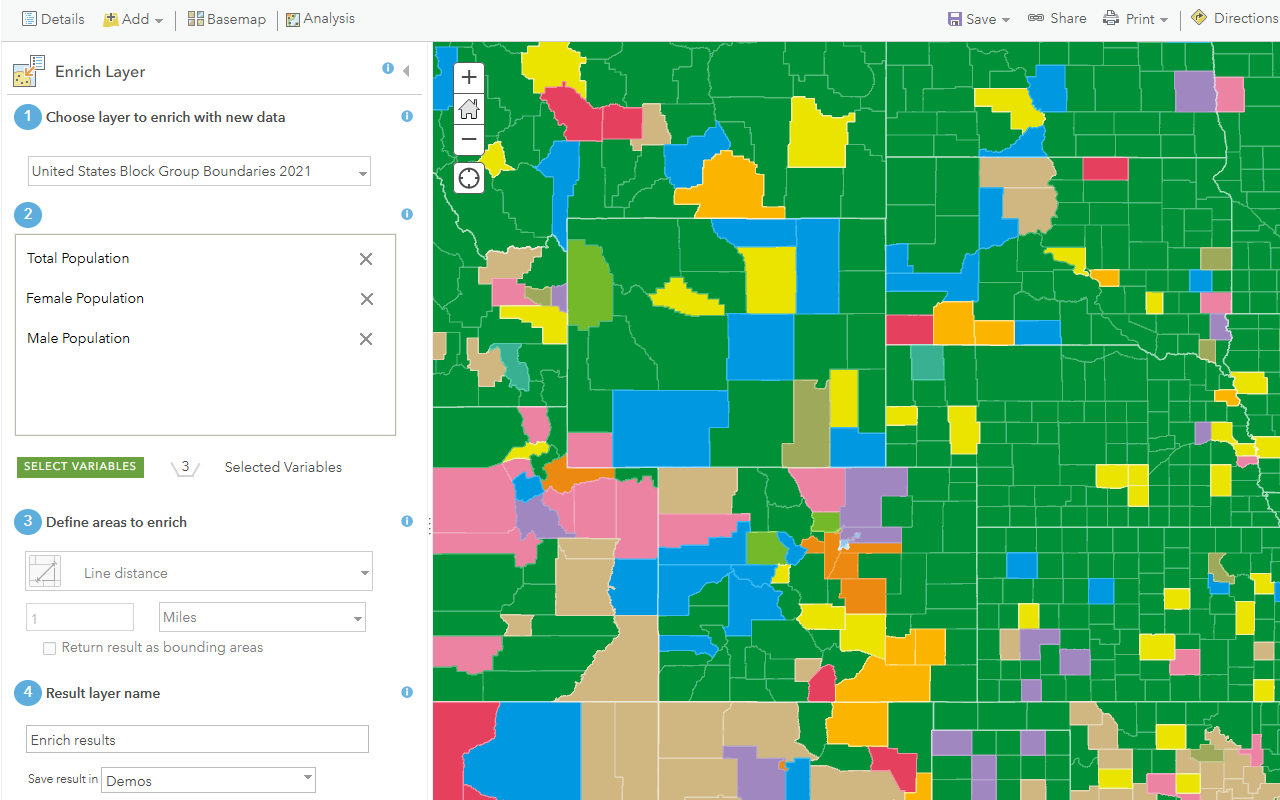
Enrich data sources
Enrich data with demographic information and local business facts using the spatial analysis service.

Perform a feature analysis
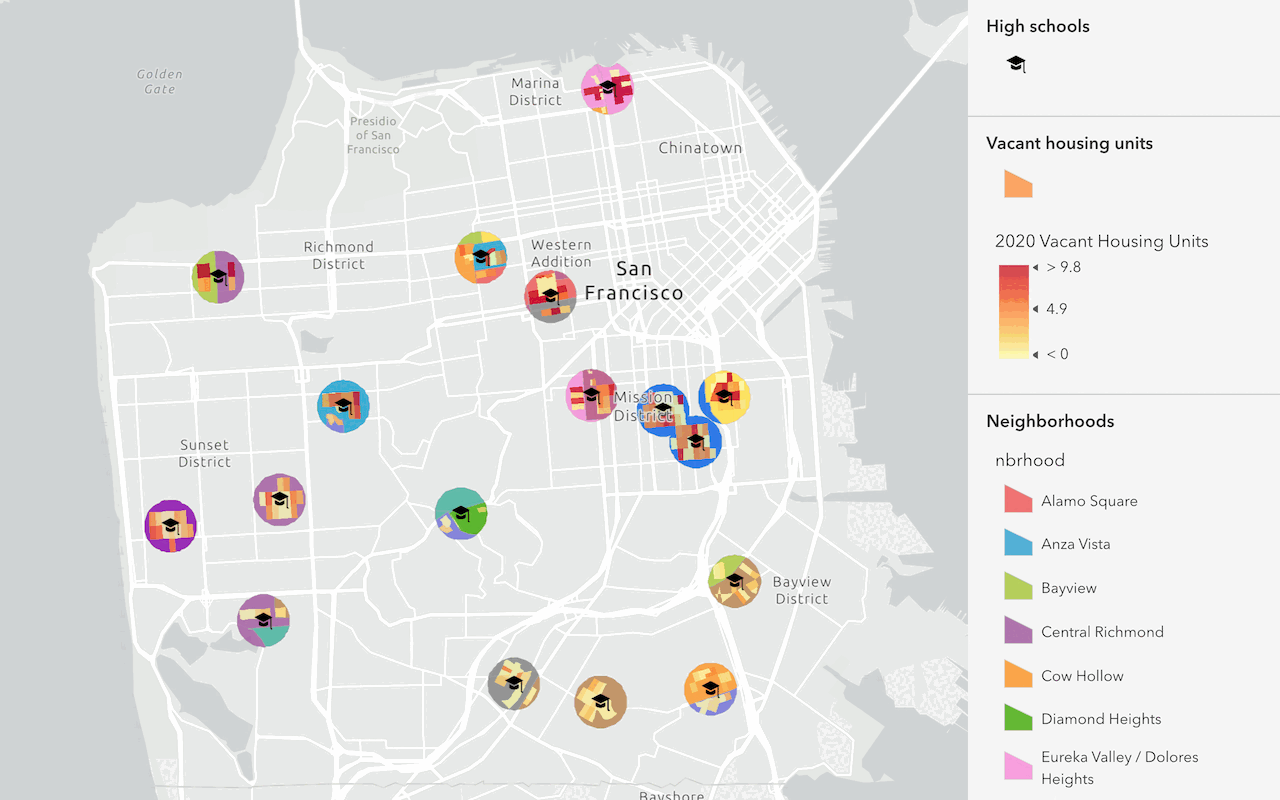
Find and extract data
Find data with attribute and spatial queries using find analysis operations.
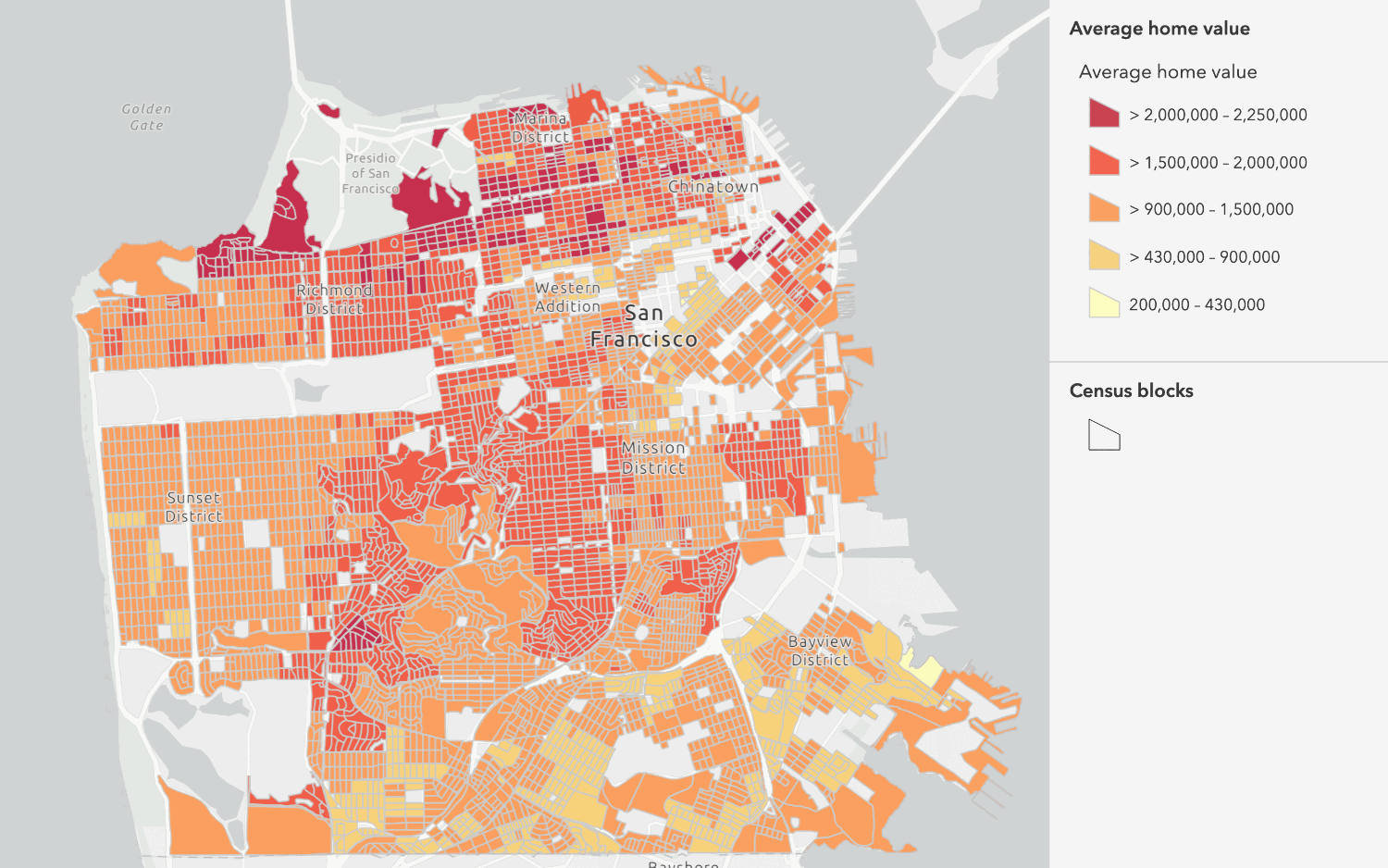
Combine data
Overlay, join, and dissolve features using combine analysis operations.
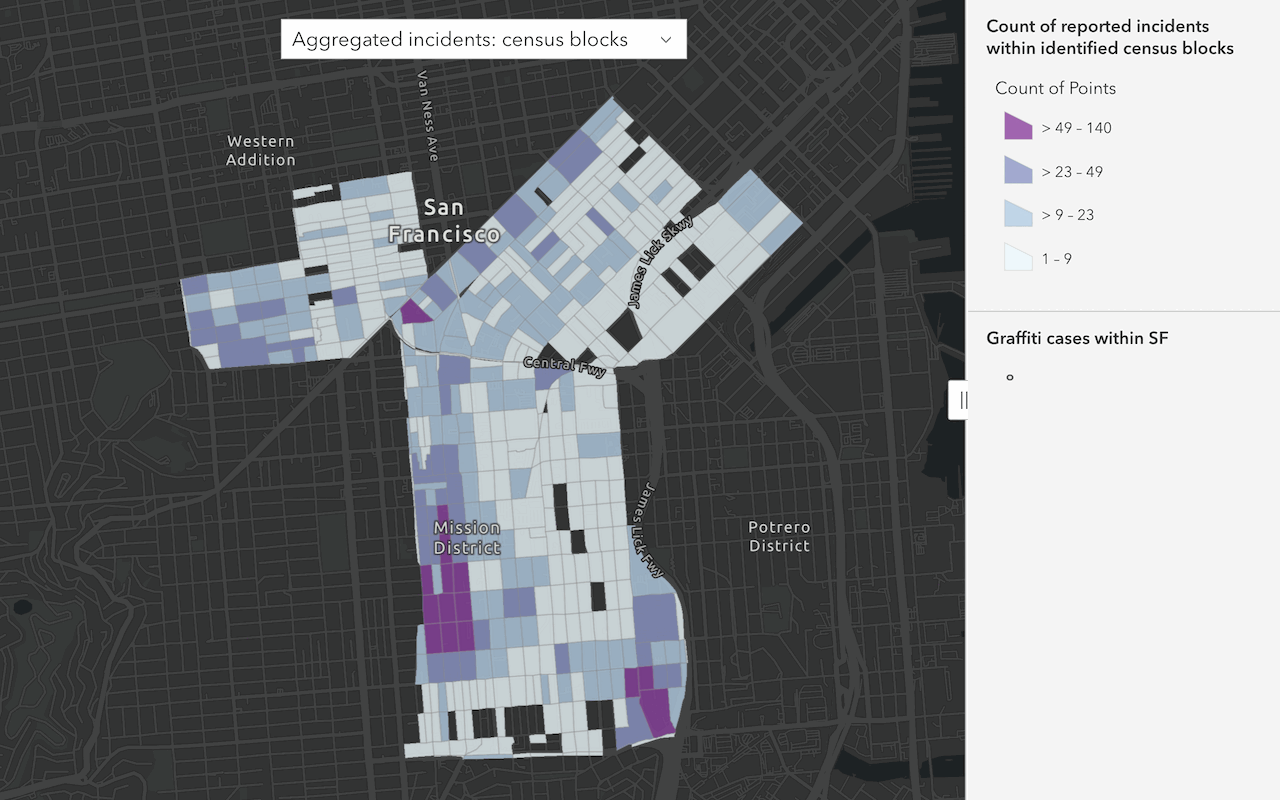
Summarize data
Aggregate and summarize features using summarize analysis operations.
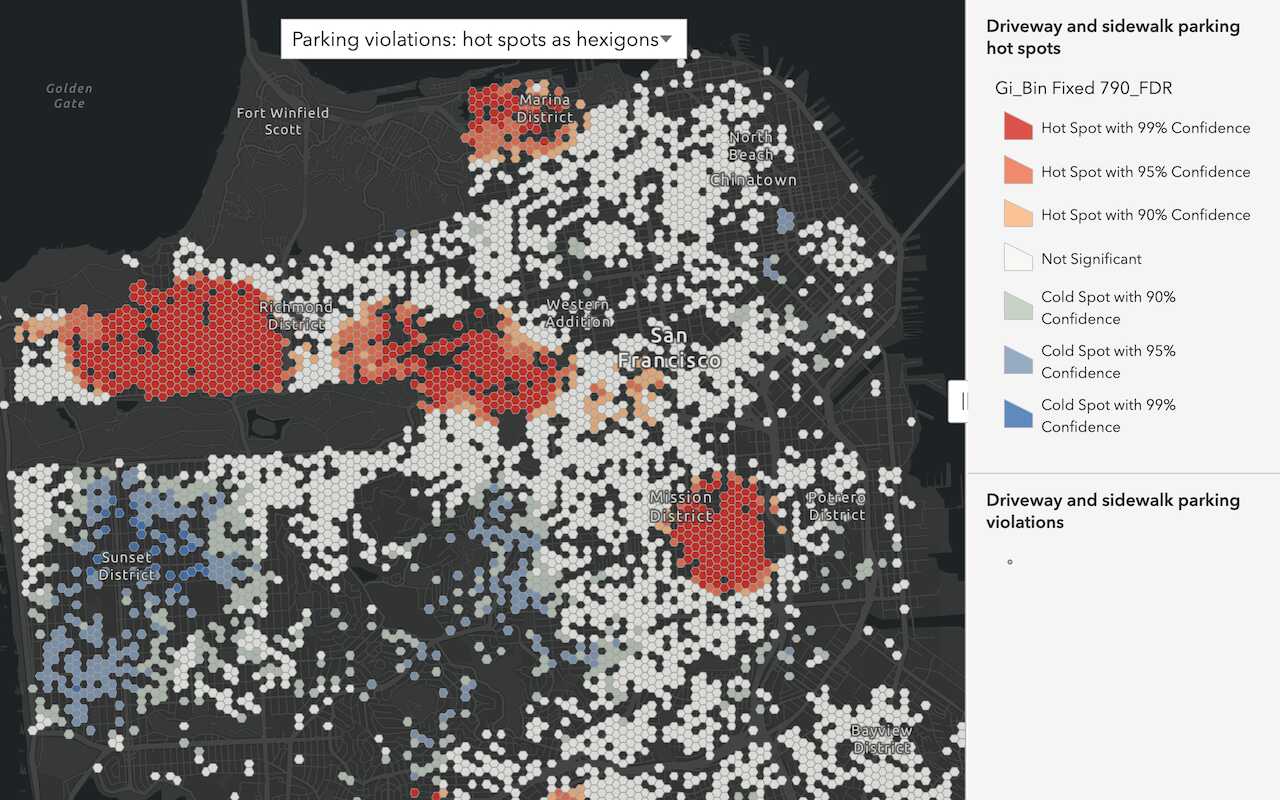
Discover patterns in data
Find patterns and trends in data using spatial analysis operations.
Services
API support
| Find data | Combine data | Summarize data | Analyze patterns | Calculate geometries | |
|---|---|---|---|---|---|
| ArcGIS Maps SDK for JavaScript | 1 | 1 | 1 | 1 | 1 |
| ArcGIS Maps SDK for .NET | |||||
| ArcGIS Maps SDK for Kotlin | |||||
| ArcGIS Maps SDK for Swift | |||||
| ArcGIS Maps SDK for Flutter | |||||
| ArcGIS Maps SDK for Java | |||||
| ArcGIS Maps SDK for Qt | |||||
| ArcGIS API for Python | |||||
| ArcGIS REST JS | 1 | 1 | 1 | 1 | 1 |
| Esri Leaflet | 2 | 2 | 2 | 2 | 1 |
| MapBox GL JS | 2 | 2 | 2 | 2 | 1 |
| OpenLayers | 2 | 2 | 2 | 2 | 1 |
- 1. Access with geoprocessing task
- 2. Access via ArcGIS REST JS
